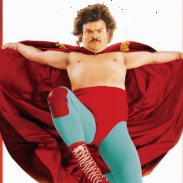Cornering
-
Recently Browsing 0 members
- No registered users viewing this page.
Announcements
-
Topics
-
-
Popular Contributors
-
-
Latest posts...
-
9
-
50
Trump: The Big Beautiful Failure
He's already been found guilty of sexual abuse in a court of law. How is that "media noise"? -
48
UK Migrant Arrested for Allegedly Entering Blind Woman's Flat
Your posts are becoming increasingly obnoxious I suspect that you are obnoxious (or just a troll) but I am only allowed to target the post, not the poster. -
50
Trump: The Big Beautiful Failure
I say, that is a bit harsh, I am sure that he still has in mind "concepts of a plan for healthcare". After all Rome wasn't built in a day, mind you it only took a few days for the Gauls to sack it in 396BC. Mind you the French always were a bit impetuous! -
11
Ukraine Zelensky: Russia Stalls Peace; Trump Pushes Ukraine Deal!
Zelenskyy in his brain addled ninkumpoop posturing doesn't get it and don't get much. Why would Russia give a rats rectum about a cease fire when they are winning! Stupid people saying and doing stupid things. Trump will provide the solution, resolutions, peace agreements, etc AND MORE beginning Monday and THEN in October collect his Nobel peace prize. How about that haters! -
48
UK Migrant Arrested for Allegedly Entering Blind Woman's Flat
I am starting to become paranoid about 'thumbs down' emoticons. What piece of sh!t could possibly add that to your post.
-
-
Popular in The Pub





.thumb.jpg.3ee24d9400fb02605ea21bc13b1bf901.jpg)








Recommended Posts
Create an account or sign in to comment
You need to be a member in order to leave a comment
Create an account
Sign up for a new account in our community. It's easy!
Register a new accountSign in
Already have an account? Sign in here.
Sign In Now